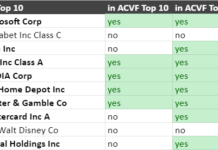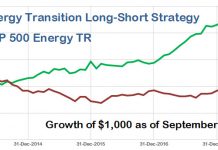In my recent article about Green Energy Exchange Traded Funds (ETFs), I said that there were two main criteria investors should consider when choosing one (the fund’s expense ratio, and its investment universe.) This is true for investors who are looking for a single investment in alternative energy, but if you are a more sophisticated investor or speculator, there’s another important criterion: Is there a market for exchange traded options on the ETF?
I personally love selling (a.k.a. "writing") options. If the stock market is a casino, option sellers are the house. Longtime readers will recall my article last year about cash covered puts. Using cash covered puts, an option writer will either 1) end up owning a stock at a price that seemed good when he wrote the put, or 2) make a high return on the capital he risks (see the link above for details.)
The other type of option writing I use is covered calls. When I already own a stock or ETF, and would not mind selling at some price X, I write a call at X, and collect a premium. This is an especially attractive strategy when you expect that the market is not likely to make large gains anytime soon. I also use this strategy with any stock I want to sell…. I write covered calls with strike prices slightly below the current price, and either end up selling at slightly more than the current price, or collect substantial premium income. I mentioned this strategy in my article When to Sell: Five Rules of Thumb last year (Rule #4).
Other Strategies
None of these ETFs have liquid enough options markets to execute more complex options strategies such as spreads or straddles. However, speculators looking for leverage and increased profit potential are likely to be interested in buying calls or puts. For many investors, this is the first option strategy they try, partly because it is the easiest for which to get option trading authorization. Although most options expire worthless, the potential loss is no more than the premium you pay, so monitoring overall risk is much easier than with option-writing strategies.
Clean Energy ETF Options
Since I focus on investing in individual renewable energy and energy efficiency companies, I don’t usually use renewable energy and energy efficiency ETFs or mutual funds. The exception to this is when I have some expectation for the sector as a whole, or for one of the sub- sectors for which there are ETF trackers, such as Wind and Solar.
The problem is, exchange traded options markets are always considerably less liquid than the markets in the underlying security. In illiquid markets, it almost always makes sense to accept the risk that a trade may not go through in order to get a specified price by using limit orders. But in order to have a chance of the trade executing with a limit order, the more liquid the market the better.
Therefore, when I dabble in ETFs, I seldom use the same ones I recommend to passive investors: I choose the ones with the most active options markets. They are:
Whole-sector Clean Energy ETFs: PBW. None of the other whole-sector ETFs (QCLN, ICLN, GEX, PBD) has exchange traded options on it, so the choice is simple.
Wind ETFs: FAN. Again, the other sector ETF (PWND) does not have options traded on it.
Solar ETFs: TAN. Although the other Solar ETF, KWT, also has options which trade on it, the number of options outstanding on TAN is far greater, a clear indication of greater market liquidity.
Carbon ETFs: Neither of these (ASO, GRN) has options traded on it.
All of this explains my disclosure below.
Tom Konrad, Ph.D,
DISCLOSURE: Tom Konrad has written puts on PBW and FAN.
DISCLAIMER: The information and trades provided here and in the comments are for informational purposes only and are not a solicitation to buy or sell any of these securities. Investing involves substantial risk and you should evaluate your own risk levels before you make any investment. Past results are not an indication of future performance. Please take the time to read the full disclaimer here.









Great work. I also wrote an article throwing some etf and stock names in the article. Take a look and see what you think.
I think calling CLNE “almost all green” is a stretch. Natural gas is a fossil fuel.
Tom,
I love this article. I also use naked puts to enter in stocks at much lower prices than the current prices.
I use covered calls for stocks I want to sell or for stocks I am underwater.
And last but not least, thanks for linking to my articles on the pros and cons of selling covered calls!
Best Regards,
Dividend Growth Investor
Comments are closed.